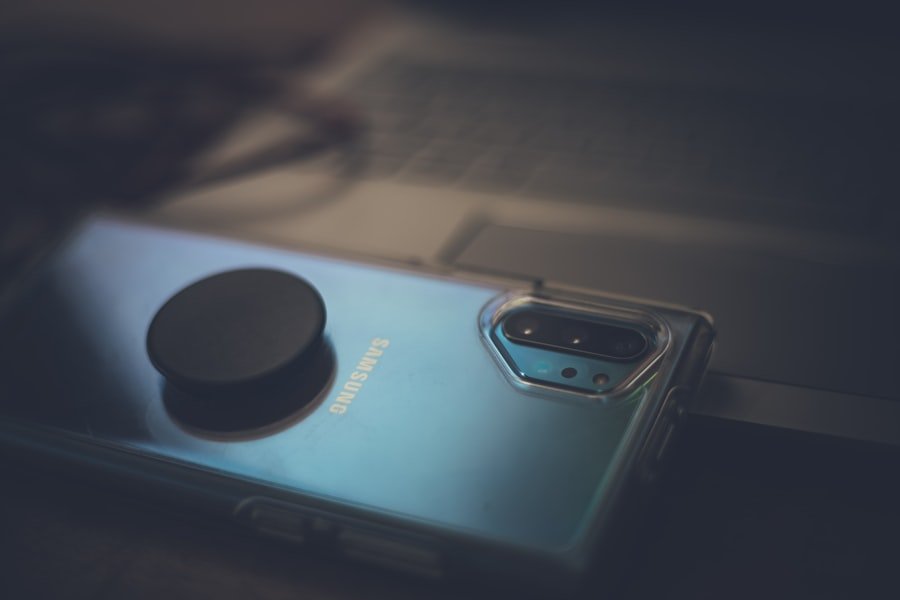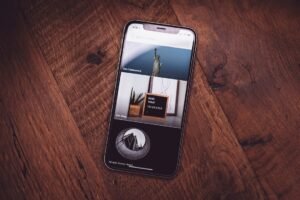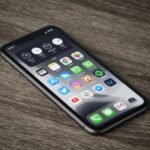Mobile phone design has come a long way since the first brick-like devices were introduced in the 1980s. Over the years, we have seen a significant evolution in the design of mobile phones, with each new generation pushing the boundaries of what is possible. One device that has had a particularly profound impact on the industry is Apple’s iPhone. Since its introduction in 2007, the iPhone has not only revolutionized the way we use our phones but has also played a crucial role in shaping modern mobile phone design.
Key Takeaways
- Mobile phone design has evolved from flip phones to sleek and modern iPhone-inspired designs.
- Apple’s iPhone has had a significant influence on the design of smartphones.
- There has been a rise in iPhone clones that mimic Apple’s iconic design.
- iPhone-inspired mobile phones are popular in the global market.
- There are similarities and differences between an iPhone and iPhone-like mobile phones.
The evolution of mobile phone design: from flip phones to iPhones
In the early days of mobile phones, designs were simple and utilitarian. These devices were primarily used for making calls and sending text messages, and their designs reflected this functionality. They were often bulky and had large antennas protruding from the top. However, as technology advanced, so did mobile phone design.
One of the most significant developments in mobile phone design was the introduction of flip phones. These devices featured a clamshell design, with a hinge that allowed the phone to be opened and closed like a book. Flip phones quickly gained popularity due to their compact size and sleek look. They were also more durable than their predecessors, as the flip mechanism protected the screen when not in use.
The emergence of smartphones marked another milestone in mobile phone design. These devices combined the functionality of a traditional mobile phone with advanced computing capabilities. However, it was Apple’s iPhone that truly revolutionized the smartphone industry. With its sleek and minimalist design, intuitive user interface, and groundbreaking features such as multi-touch technology, the iPhone set a new standard for what a smartphone could be.
The sleek and modern look of iPhone-inspired mobile phones
One of the most notable aspects of iPhone-inspired mobile phones is their sleek and modern look. The iPhone introduced a minimalist design aesthetic that emphasized clean lines and simplicity. Its smooth edges, slim profile, and seamless integration of hardware and software made it a standout in the market.
This design philosophy has had a significant influence on other mobile phone manufacturers. Many smartphones today feature similar design elements, such as slim profiles, glass backs, and edge-to-edge displays. The use of premium materials like glass and metal has also become more common, giving these devices a more premium feel.
Examples of popular iPhone-inspired mobile phones include the Samsung Galaxy S series, Google Pixel, and Huawei P series. These devices not only share similar design elements with the iPhone but also strive to provide a user experience that is on par with Apple’s flagship device.
How Apple’s iPhone has influenced the design of smartphones
Apple’s design philosophy has had a profound impact on the smartphone industry as a whole. The company’s commitment to simplicity, elegance, and user-centered design has set a new standard for mobile phone manufacturers.
One of the ways in which Apple has influenced the design of smartphones is through its emphasis on minimalism. The iPhone’s clean and uncluttered interface has inspired other manufacturers to simplify their own user interfaces. This has resulted in more intuitive and user-friendly experiences for consumers.
Another area where Apple’s influence can be seen is in the use of gestures. The iPhone was one of the first devices to introduce gestures as a primary method of navigation. This approach has since been adopted by other smartphone manufacturers, allowing users to navigate their devices with ease.
The rise of iPhone clones: mobile phones that mimic Apple’s iconic design
With the popularity of the iPhone, it was only a matter of time before we started seeing clones or imitations of Apple’s iconic design. These devices, often referred to as “iPhone clones,” aim to replicate the look and feel of an iPhone at a lower price point.
iPhone clones have gained popularity in markets where the iPhone itself may be too expensive for many consumers. These devices often feature similar design elements, such as a notch at the top of the display, a glass back, and a dual-camera setup. However, they may not offer the same level of performance or software experience as an actual iPhone.
Legal issues surrounding iPhone clones have also been a concern. Apple has been known to take legal action against companies that produce devices that infringe on its intellectual property rights. This has led to some manufacturers modifying their designs to avoid legal repercussions.
The popularity of iPhone-inspired mobile phones in the global market

iPhone-inspired mobile phones have gained significant popularity in the global market. According to statistics, Apple’s iPhone is consistently one of the best-selling smartphones worldwide. However, there are regions where iPhone-like phones are more popular due to factors such as affordability and local preferences.
In emerging markets, where price is a significant factor for consumers, iPhone-inspired mobile phones have gained traction. These devices offer a similar design aesthetic to the iPhone at a fraction of the cost. Additionally, some consumers may prefer the Android operating system over iOS, making these devices an attractive alternative.
In regions like China, local manufacturers have also capitalized on the popularity of iPhone-inspired mobile phones. Companies like Xiaomi and Oppo have gained a significant market share by offering devices that combine high-quality design with competitive pricing.
The similarities and differences between an iPhone and iPhone-like mobile phones
While iPhone-like mobile phones may share some design elements with an actual iPhone, there are several key differences between the two.
In terms of design, iPhone-like phones often mimic the look of an iPhone but may not use the same premium materials or manufacturing processes. This can result in differences in build quality and overall feel.
Another difference lies in the software experience. iPhones run on Apple’s iOS operating system, which is known for its smooth performance and tight integration with hardware. On the other hand, iPhone-like phones typically run on Android, which offers more customization options but may not provide the same level of optimization.
The benefits of owning an iPhone-inspired mobile phone
There are several advantages to owning an iPhone-inspired mobile phone. One of the main benefits is affordability. iPhone-like phones often offer a similar design aesthetic to an actual iPhone at a lower price point, making them more accessible to a wider range of consumers.
Additionally, iPhone-like phones often run on the Android operating system, which offers a more open ecosystem compared to iOS. This means that users have more flexibility in terms of customization and app selection.
Furthermore, iPhone-like phones often come with features and specifications that are comparable to high-end smartphones. This means that consumers can enjoy a premium experience without having to pay a premium price.
The drawbacks of owning an iPhone-inspired mobile phone
While there are benefits to owning an iPhone-inspired mobile phone, there are also some drawbacks to consider. One of the main disadvantages is the lack of software updates and support. Apple is known for providing regular updates to its devices, ensuring that users have access to the latest features and security patches. However, this may not be the case with iPhone-like phones, as manufacturers may not prioritize software updates.
Another drawback is the potential for lower build quality and reliability. While some iPhone-like phones may offer a similar design aesthetic to an actual iPhone, they may not use the same high-quality materials or manufacturing processes. This can result in devices that are more prone to damage or malfunction.
Additionally, iPhone-like phones may not offer the same level of performance as an actual iPhone. This can be particularly noticeable when it comes to tasks that require significant processing power, such as gaming or multitasking.
How to choose the best iPhone-like mobile phone for your needs
When choosing an iPhone-like mobile phone, there are several factors to consider. One of the main considerations is your budget. Determine how much you are willing to spend and look for devices that offer the best value for your money.
Another factor to consider is the software experience. If you are already familiar with iOS and prefer its user interface, you may want to consider an actual iPhone. However, if you prefer the customization options offered by Android, look for iPhone-like phones that run on the latest version of the operating system.
Additionally, consider the specifications and features that are important to you. Look for devices that offer a good balance of performance, camera quality, and battery life. Consider your usage patterns and prioritize features that align with your needs.
Some popular iPhone-like phones to consider include the Samsung Galaxy S series, Google Pixel, and OnePlus devices. These devices offer a similar design aesthetic to an actual iPhone while providing a high-quality user experience.
The future of mobile phone design: will iPhones continue to inspire new designs?
As we look to the future of mobile phone design, it is clear that iPhones will continue to inspire new designs. Apple has consistently pushed the boundaries of what is possible in terms of design and innovation, and this trend is likely to continue.
One current trend in mobile phone design is the move towards foldable devices. Apple has already filed patents for foldable phone designs, indicating that they may be working on their own version of this technology. If successful, foldable iPhones could revolutionize the industry once again.
Another area where iPhones are likely to continue influencing design is in the integration of augmented reality (AR) technology. Apple has made significant investments in AR, and it is expected that future iPhones will feature advanced AR capabilities. This could open up new possibilities for mobile phone design and user experiences.
In conclusion, the evolution of mobile phone design has been shaped by various factors over the years. However, one device that has had a particularly significant impact is Apple’s iPhone. With its sleek and minimalist design, intuitive user interface, and groundbreaking features, the iPhone has set a new standard for what a smartphone can be.
iPhone-inspired mobile phones have gained popularity worldwide, offering consumers a similar design aesthetic at a more affordable price point. While these devices may not offer the same level of performance or software experience as an actual iPhone, they provide a viable alternative for those who appreciate the iPhone’s design but have budget constraints.
As we look to the future, it is clear that iPhones will continue to inspire new designs and innovations in the mobile phone industry. Whether it is through foldable devices or advanced AR capabilities, Apple’s commitment to design and user experience will continue to shape the industry for years to come.
If you’re a fan of mobile phones that resemble the iconic iPhone, then you’ll definitely want to check out the Umidigi G5. This unlocked cell phone is a feature-packed device designed for everyday use. With its sleek design and impressive specifications, it’s no wonder why it’s gaining popularity among smartphone enthusiasts. To learn more about the Umidigi G5 and its capabilities, be sure to read the related article on MobileN-BG.com: Umidigi G5: Unlocked Cell Phone – A Feature-Packed Device for Everyday Use.









